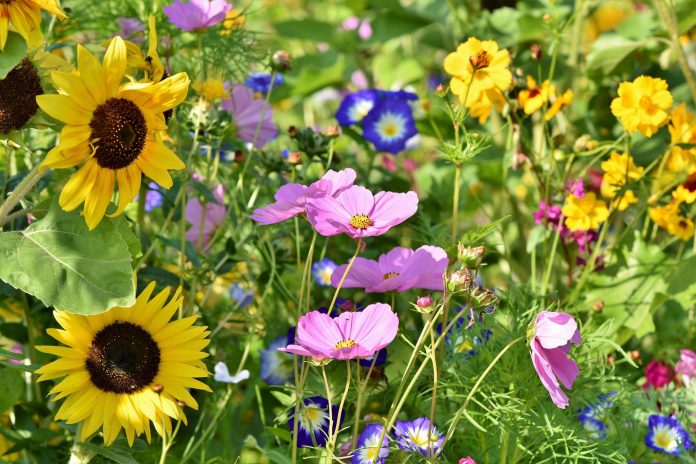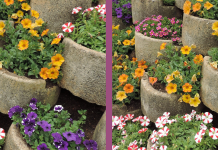It may sound corny, but that old saying,’ the earth laughs in flowers’ pretty much sums up one’s response to a flower-filled garden.
Like everything else, gardening is getting expensive. But one of the most affordable ways to garden is to grow your own flowers from seed. The next time you are at a garden centre or hardware store visit the seed racks. Chances are you’ll be blown away by the huge variety of flowers that can be grown from seed.
It does take a little more effort than just putting a few seedlings in the ground, but the rewards are so much more!
Start with seed packet
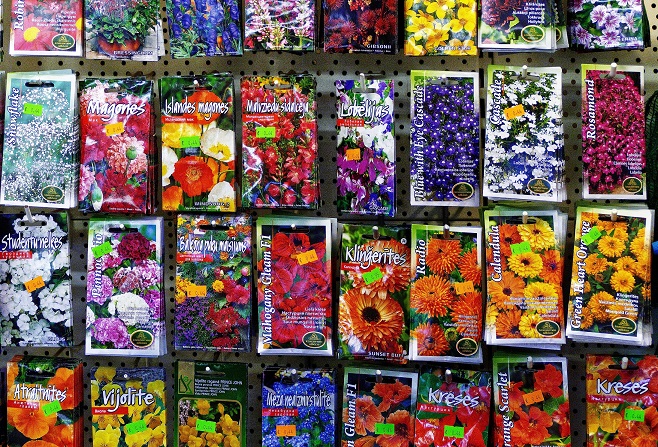
It has all the information you need; when to sow, whether the flowers grow best in sun or shade, sowing depth, spacing, germination time and when the flowers appear. It’s usually in picture form so it is super easy to follow.
Choose your sowing method
Sowing can be directly into the soil where the flowers are to grow or into seedling trays.
Direct sowing is preferable when you want a mass effect of alyssum, for instance, or Namaqualand daisies or cosmos. It also suits plants that develop deep taproots and don’t like to be transplanted such as lavatera (mallow) or flowers with large seeds like sunflowers.
Generally, it is easier and more manageable to sow seeds in seeding trays and then plant the seedlings out into the garden.
Flowers to sow in seed trays

California poppies, carnations, cornflowers, dahlias, delphiniums and foxgloves (pictured) are some of the garden favourites to start seed trays.
Some tips
- Be careful not to overwater carnation seeds, especially in the beginning stages. A light watering should be done two to three times a week.
- Foxglove seeds need light to germinate. Press the seed into the seedling mix but do not cover.
Sowing in seed trays …step by step guide
Use a new seed tray or one that has been washed and sterilised and fill it with a specialised seedling mix from a garden centre or hardware outlet.
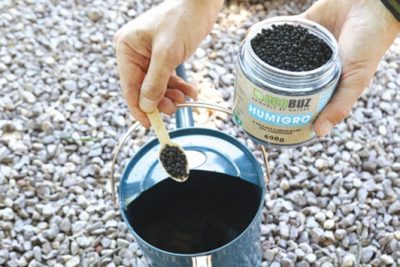
Mix a 5g packet each of EcoBuz HumiGro, StartGro and Root Pro with water and pour into a 5 litre watering can. Fill up the can, stir well and lightly water the mix to moisten it.
Good to know: This EcoBuz root-health mixture aids germination and helps with the early development of roots and shoots, as well as adding carbon (for soil structure) to the seedling mix. Press the soil down gently and let it settle, for sowing later or the next day.
https://ecobuz.co.za/root-health-program-pdf/
Scatter small seeds evenly across the surface of the soil or plant larger seeds individually. Cover with a thin layer of seedling mix or use vermiculite which is light and retains water.
Gently water the seeds, again using the watering can filled with the EcoBuz root health mixture. Start and end watering away from the seed tray as the first and last drops are usually bigger and may wash away the layer of soil covering them.
Place the seed tray in a warm, sheltered place in light shade. Cover with plastic to retain moisture during germination.
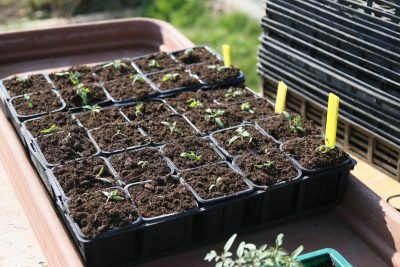
Transplant from seed trays when the seedlings have developed the second set of true leaves or when they are big enough to handle. Settle them in with a drench of StartGro which contains silica that reduces transplant shock.
https://ecobuz.co.za/nurture-startgro/
Garden favourites for sowing directly into the soil
The fine seed of zinnias (pictured) alyssum, snapdragons, Namaqualand daisies, cosmos, and marigolds can be sprinkled across the soil surface and lightly pressed down or covered with a light layer of soil and firmed. Keep the soil moist during germination and don’t weed until the plants have become established.
Lavatera (pictured), and gypsophila don’t like their roots disturbed which is why it is better to direct sow them. For a continuous crop of sunflowers sow a new row of seeds every two to three weeks.
Direct sowing …step by step
Find the right spot, based on whether the plants you want to grow from seed need sun, semi-shade or shade.
Loosen the soil, break up any big clods of soil, remove large sticks and stones and add in plenty of compost. Compost improves fertility and drainage.
Rake the soil until it’s level and the texture is fine, which ensures better germination. Lightly water the area and leave overnight so that the soil is damp when sowing.
Shallow-sow fine seed while very fine seed can simply be sprinkled on the surface of the soil. Firm it down to prevent being blown away by the wind. Sow larger seeds in individual holes.
After sowing, make up the EcoBuz root health mixture in a 5 litre watering can: 5g packets each of HumiGro, StartGro and Root Pro. Water the bed with the EcoBuz root health mixture and keep the soil consistently moist during germination.
Two weeks after germination drench with another application of StartGro and thereafter once a month with MultiGro, the all-in-one nutrient blend that acts as a bio-stimulant to maintain healthy growth.
https://ecobuz.co.za/nurture-multigro/

